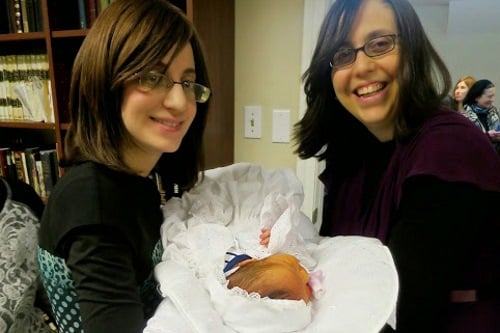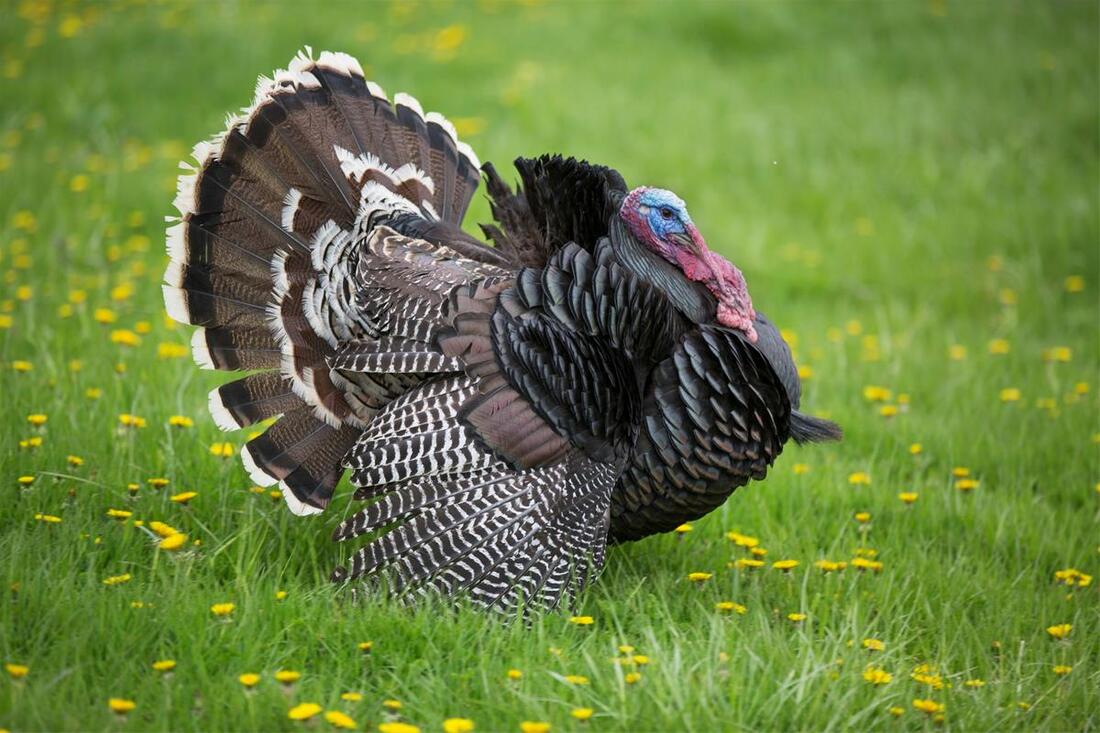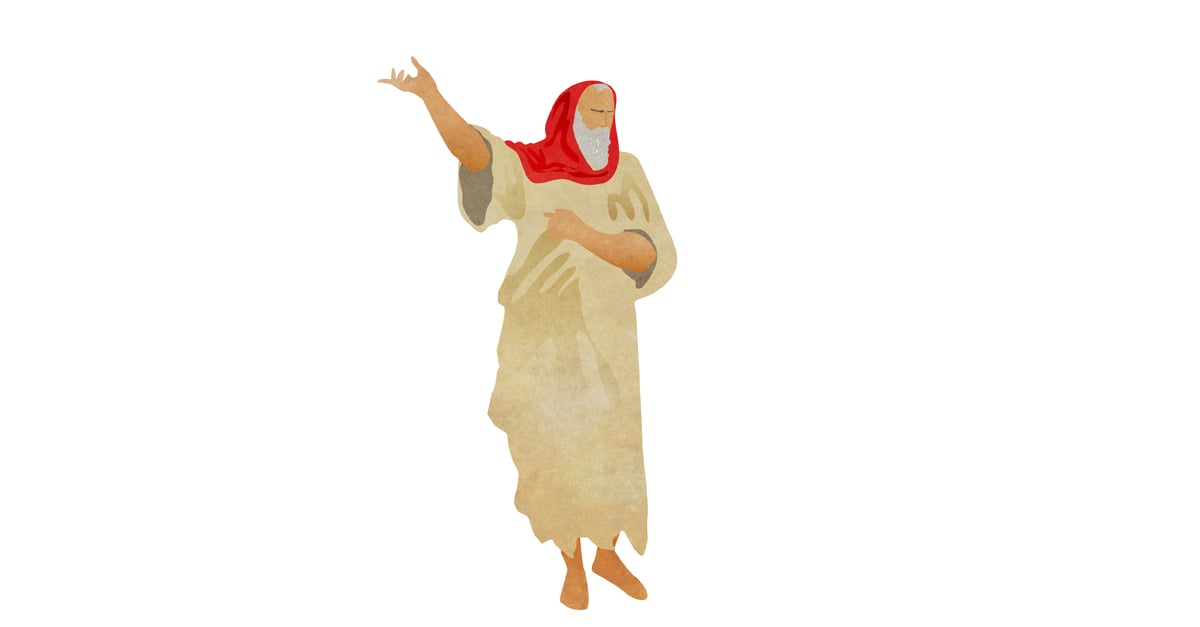 Rabbi David Etengoff Dedicated to the sacred memories of my mother, Miriam Tovah bat Aharon HaKohane, father-in-law, Levi ben Yitzhak, sister, Shulamit bat Menachem, sister-in-law, Ruchama Rivka Sondra bat Yechiel, Chana bat Shmuel, Yehonatan Binyamin ben Mordechai Meir Halevi, Tikvah bat Rivka Perel, Gittel Malka bat Moshe, Alexander Leib ben Benyamin Yosef, the Kedoshim of Har Nof, Pittsburgh, and Jersey City, the refuah shlaimah of Mordechai HaLevi ben Miriam Tovah, and the health and safety of our brothers and sisters in Israel and around the world. Chapter 23 of our parasha is popularly known as parashat hamoadim. In its introductory verses we find: And Hashem spoke to Moses, saying: “Speak to the children of Israel and say to them: ‘[These are] Hashem’s appointed [holy days] that you shall designate as holy occasions (mikra’ei kodesh). These are My appointed [holy days].’” (These and all Tanach and Rashi translations, The Judaica Press Complete Tanach) Based on these pasukim, we would expect that the very next verse should focus on Pesach, the first of the mikra’ei kodesh. This, however, is not the case: “[For] six days, work may be performed, but on the seventh day, it is a complete rest day, a holy occasion; you shall not perform any work. It is a Sabbath to Hashem in all your dwelling places.” On the surface, this pasuk certainly seems to be out of place, since unlike the mo’adim Shabbat is sanctified by Hashem. As we find in a celebrated passage in Parashat Bereishit: Now the heavens and the earth were completed and all their host. And Elokim completed on the seventh day His work that He did, and He abstained on the seventh day from all His work that He did. And Elokim blessed the seventh day, and He hallowed it, for thereon He abstained from all His work that Elokim created to do. (2:1-3, underlining my own) A number of Torah commentators have addressed this problem. Rashi (1040-1105), based upon the Sifra, the halachic midrash to Sefer Vayikra, explains the placement of Shabbat at the beginning of the presentation of the mo’adim in this manner: Why does the Sabbath [designated by G-d,] appear here amidst the festivals? To teach you that whoever desecrates the festivals is considered [to have transgressed as severely] as if he had desecrated the Sabbath, and that whoever fulfills the festivals is considered as if he has fulfilled the Sabbath, [and his reward is as great]. In sum, Rashi presents the classic opinion that, in a very significant way, the mo’adim are equivalent to Shabbat, even though it is man, rather than Hashem, who designates their actual calendrical dates. Rabbi Ya’akov Kamenetsky zatzal (1891-1986) takes a different approach in his answer to the question, “Why does the Sabbath appear amidst the festivals?” It appears to me that all nations and ethnicities have their different festivals and appointed times. Given that this is the case, in order to prevent us from erring and thinking that our festivals are no different in kind or degree from those of the other nations of the world, the Torah begins with the notion that without the Shabbat there would be no importance whatsoever to the mo’adim. The reason for this is eminently clear—for without the declaration of the holiness of Shabbat [by Hashem], no holiness would inhere in the mo’adim. (Emet l’Yaakov, Parashat Emor 23:2, translation and brackets my own) According to Rav Kamenetsky, the holiness of Shabbat imbues the mo’adim with their singular status and holiness. True, the Jewish people declare the dates for the onset of the mikra’ei kodesh; yet their kedushah ultimately derives from Shabbat itself. Rabbi Nissan Alpert zatzal (1928-1986) was one of the highly respected roshei yeshivah of Yeshivat Rabbi Yitzhak Elhanan and one of the greatest students of Rav Moshe Feinstein zatzal (1895-1986). In his posthumously published work of Torah analysis, Limudei Nissan, Rav Alpert presents an examination of Shabbat’s connection to the mo’adim that at once parallels and expands upon Rav Kamenetsky’s analysis: [The reason why Shabbat appears in the midst of the festivals] is to emphasize that it is the mother of all the mo’adim, and the holiness of these [appointed] times flows from Shabbat. By way of explanation, this means that it is possible to extend the holiness of Shabbat to the other mo’adim. It is as if Hashem said, “I have sanctified the Shabbat, now, I give you [the Jewish people] the power and the permission to consecrate the rest of the appointed times.” Moreover, just as it is the purpose of the Shabbat to cease from the creative activities of the workweek through complete and total [spiritual] relaxation in order to draw near to Hashem, so, too, this should be our orientation on the other yamim tovim. In other words, our actions and behaviors on these days should be aimed at strengthening our faith and trust in Hashem. (Parashat Emor, page 50, s.v. v’nireh li, translation and brackets my own) Rav Alpert’s response focuses on several major points. He asserts that Shabbat appears in the midst of the festivals because it is the “mother” of the mo’adim. As such, the holiness of the mikra’ei kodesh flows directly from Shabbat and, just as Hashem consecrates Shabbat, we, too, are given the power and permission to sanctify the festivals. Lastly, he explains that the purpose of the mo’adim is similar in kind to that of Shabbat, urging us to utilize the holy moments of both Shabbat and the festivals to strengthen our faith and trust in the Master of the Universe. May we be zocheh to strengthen our emunah and bitachon in the Almighty as we honor Shabbat and rejoice on the mo’adim. V’chane yihi ratzon. Shabbat Shalom Past drashot may be found at my blog-website: http://reparashathashavuah.org. Please contact me at [email protected] to be added to my weekly email list. *** My audio shiurim on the topics of Tefilah and Tanach may be found at: http://tinyurl.com/8hsdpyd *** I have posted 164 of Rabbi Soloveitchik’s English language audio shiurim (MP3 format) spanning the years 1958-1984. Please click on the highlighted link: The Rav
0 Comments
 Rabbi David Etengoff Dedicated to the sacred memories of my mother, Miriam Tovah bat Aharon HaKohane, father-in-law, Levi ben Yitzhak, sister, Shulamit bat Menachem, sister-in-law, Ruchama Rivka Sondra bat Yechiel, Chana bat Shmuel, Yehonatan Binyamin ben Mordechai Meir Halevi, Tikvah bat Rivka Perel, Gittel Malka bat Moshe, Alexander Leib ben Benyamin Yosef, the Kedoshimof Har Nof, Pittsburgh, and Jersey City, the refuah shlaimah of Mordechai HaLevi ben Miriam Tovah, and the health and safety of our brothers and sisters in Israel and around the world. The prohibition of eating blood is one of the best-known mitzvot in Parashat Acharei Mot. In his Commentary on the Torah, on Sefer Vayikra 17:10-11, the Ramban (1194-1270) notes that many of the verses that proscribe the consumption of blood employ the word, “nefesh,” as we see in the following examples: For the soul of the flesh is in the blood… For [regarding] the soul of all flesh, its blood is in its soul, and I said to the children of Israel: You shall not eat the blood of any flesh, for the soul of any flesh is its blood; all who eat it shall be cut off. However, be strong not to eat the blood, for the blood is the soul; and you shall not eat the soul with the flesh. (Sefer Vayikra 17:11, 14 and Sefer Devarim 12:23, all Bible translations, The Judaica Press Complete Tanach) This leads the Ramban (1194-1270) to a deeply insightful analysis of this mitzvah: … if a person eats the soul of all flesh (that is, blood), and joins it with his blood, they become united in his being; this results in an obdurate nature and arrogance in the soul of man. Moreover, he will enter into a [spiritual] state that is close to the animal soul that has been eaten… and the man’s soul will be combined with the blood of the animal. Therefore, the text states, “For [regarding] the soul of all flesh, its blood is in its soul…” (Sefer Vayikra 17:14) for in all the flesh of both man and the animals, the soul is to be found in the blood. [Moreover,] it is not fitting to mix the soul that has been cut off [that of the animal that has been killed] with the soul that continues to live [that of the man] … And this is the reason why I [Hashem] have said to the Jewish people [not to eat blood], since the blood is the soul, and it is not fitting for a soul to eat another soul. (Commentary on Sefer Vayikra 17:11-12, translation, underlining and brackets my own) The Ramban’s spiritually oriented interpretation of our mitzvah focuses on several major elements: Ingesting blood results in a thickness and arrogance in the soul of a person; eating blood will cause a person to enter a spiritual state that is similar in kind to that of the animal he/she has eaten; it is untoward to mix the soul that has been cut off with the soul that continues to live. In general, my rebbe and mentor, Rabbi Joseph B. Soloveitchik zatzal (1903-1993), known as the “Rav” by his followers and disciples, championed the Ramban’s interpretation of ta’amei HaMitzvot—the “taste” of the mitzvot, such as the one we have discussed, over the Rambam’s (1135-1204) rationalistic and historical explanations, as found in the Moreh HaNavuchim (Guide for the Perplexed). The Rav based this position on, “the incontrovertible fact that such [rationalistic] explanations neither edify nor inspire the religious consciousness.” (Rabbi Joseph B. Soloveitchik, The Halakhic Mind: An Essay on Jewish Tradition and Modern Thought, page 92) What, then, are the hallmarks of the religious consciousness? The Rav provides a poetic answer: Man seeks God out of a thirst for the freedom of life, a desire to expand and deepen the universe. The search for God means liberation from the burden of tyrannical nature weighing heavily upon him, release from the blind forces besetting man’s life. Weary from the travail of dull life, man flees to the region of complete liberty and conjoins with God. Man desires peace of mind and seeks to wipe the tears of sorrow from his face. Out of the totality of spiritual experience that flows from the inner uniqueness and independence of the creative spirit that rises ever higher, the religious experience is revealed. (Rabbi Joseph B. Soloveitchik, And from There You Shall Seek, translation, Naomi Goldblum, pages 41-42) May we be zocheh to come ever closer to Hashem. V’chane yihi ratzon. Shabbat Shalom Past drashot may be found at my blog-website: http://reparashathashavuah.org. Please contact me at [email protected] to be added to my weekly email list. *** My audio shiurim on the topics of Tefilah and Tanach may be found at: http://tinyurl.com/8hsdpyd *** I have posted 164 of Rabbi Soloveitchik’s English language audio shiurim (MP3 format) spanning the years 1958-1984. Please click on the highlighted link: The Rav  Rabbi David Etengoff Dedicated to the sacred memories of my mother, Miriam Tovah bat Aharon HaKohane, father-in-law, Levi ben Yitzhak, sister, Shulamit bat Menachem, sister-in-law, Ruchama Rivka Sondra bat Yechiel, Chana bat Shmuel, Yehonatan Binyamin ben Mordechai Meir Halevi, Tikvah bat Rivka Perel, Gittel Malka bat Moshe, Alexander Leib ben Benyamin Yosef, the Kedoshim of Har Nof, Pittsburgh, and Jersey City, the refuah shlaimah of Mordechai HaLevi ben Miriam Tovah, and the health and safety of our brothers and sisters in Israel and around the world. The first time we are introduced to the mitzvah of brit milah is the 17th chapter of Sefer Bereshit: And Hashem said to Abraham, “And you shall keep My covenant, you and your seed after you throughout their generations. This is My covenant, which you shall observe between Me and between you and between your seed after you, that every male among you be circumcised. And you shall circumcise the flesh of your foreskin, and it shall be as the sign of a covenant between Me and between you. And at the age of eight days, every male shall be circumcised to you throughout your generations…” (17:9-12, this and all Tanach translations, The Judaica Press Complete Tanach) This mitzvah is found once again in the first of our parshiot, Parashat Tazria: “And on the eighth day, the flesh of his foreskin shall be circumcised.” (Sefer Vayikra 12:3) This repetition creates a classic exegetical problem: if the Torah gave us this mitzvah in Sefer Bereshit, why is it reiterated in Sefer Vayikra? An approach to this problem is offered by a rhetorical question found in Talmud Yerushalmi, Moed Katan III:5: “L’maidin davar kodem l’Matan Torah?—Is it possible to learn normative halachic practice from a Torah passage that was stated prior to receiving the Torah?” Tosafot’s use of this question in Talmud Bavli, Moed Katan 20a, s.v. mah chag, strongly suggests that we cannot learn any halachic obligations from Torah portions that preceded Matan Torah. Therefore, in addition to Hashem’s charge to Avraham in Sefer Bereishit, we must have a post-Matan Torah repetition of the mitzvah of brit milah if it is to be a permanent obligation. The Rambam zatzal (1135-1204) further elaborates upon the non-binding character of a pre-Matan Torah mitzvah in the first halacha of Mishneh Torah, Hilchot Avel: It is a positive commandment to mourn the loss of a close relative (krovim). As the text states: “…But [if tragic events] like these had befallen me [Aharon, regarding the deaths of Nadav and Avihu], and if I had eaten a sin offering today, would it have pleased Hashem?” (Sefer Vayikra 10:19) Aveilut is a Torah obligation only on the first day, that is the day of death and the day of the burial [assuming they are the same]. The rest of the seven days are not a Torah obligation, even though the Torah states [regarding Yosef and Ya’akov]: “… and he made for his father a mourning of seven days.” (Sefer Bereishit 50:10), for once the Torah was given, and the halacha was stated anew, at that point Moshe Rabbeinu established the practice for them [the Jewish people] of seven days of Aveilut and seven days of rejoicing [for the bride and groom]. (Translation and brackets my own) The repetition of mitzvat brit milah post-Matan Torah is an indication of its singular halachic import. As such, what is its meaning? The anonymous author of the Sefer HaChinuch, one of the most celebrated works of mitzvot exploration, suggests that a physical sign is needed to distinguish klal Yisrael from the rest of mankind. In addition, he opines that brit milah symbolically represents the vast spiritual differences that obtain between the Jewish and non-Jewish worlds: One root reason for this precept is that the Eternal L-rd, be He blessed, wished to affix in the people that He set apart to be called by His name a permanent sign in their bodies to differentiate them from the other nations in their bodily form, just as they are differentiated in their spiritual form, their very “exits and entrances” [their purpose and way in the world] not being the same. (This and the following quotation, Sefer HaChinuch: The Book of Mitzvah Education, Commandment II, translation, Charles Wengrov, page 85) Basing himself upon a variety of midrashic sources, the Sefer HaChinuch notes that brit milah brings us to physical perfection, a mark of completion (hashlamah) that enables us to join Hashem as partners both in Ma’aseh Bereishit (the act of Creation) and the perfection of the world. As such, this mitzvah teaches us that just as a person can perfect their physical being, so, too, they can perfect their spiritual being. The Sefer HaChinuch concludes with an analytical tour de force: The Eternal L-rd (be He blessed) desired to perfect the [physical] character of the Chosen People; and He wished that man would effect this perfection. [Therefore,] He did not create him complete and perfect from the womb, in order to hint to him that just as the perfection of his physical form is by his own hand, so does it lie within his means and power to complete his spiritual form through the worthiness of his actions. With Hashem’s help and our fervent desire, may the worthiness of our actions bring us to greater spiritual heights as we strive to draw near to Hashem. V’chane yihi ratzon Shabbat Shalom Past drashot may be found at my blog-website: http://reparashathashavuah.org. Please contact me at [email protected] to be added to my weekly email list. *** My audio shiurim on the topics of Tefilah and Tanach may be found at: http://tinyurl.com/8hsdpyd *** I have posted 164 of Rabbi Soloveitchik’s English language audio shiurim (MP3 format) spanning the years 1958-1984. Please click on the highlighted link: The Rav  Rabbi David Etengoff Dedicated to the sacred memories of my mother, Miriam Tovah bat Aharon HaKohane, father-in-law, Levi ben Yitzhak, sister, Shulamit bat Menachem, sister-in-law, Ruchama Rivka Sondra bat Yechiel, Chana bat Shmuel, Yehonatan Binyamin ben Mordechai Meir Halevi, Tikvah bat Rivka Perel, Gittel Malka bat Moshe, Alexander Leib ben Benyamin Yosef, the Kedoshim of Har Nof, Pittsburgh, and Jersey City, the refuah shlaimah of Mordechai HaLevi ben Miriam Tovah, and the health and safety of our brothers and sisters in Israel and around the world. Our parasha contains a biblical “Shulchan Aruch” of the laws of kashrut: “This is the law regarding animals, birds, all living creatures that move in water and all creatures that creep on the ground, to distinguish between the unclean (tamei) and the clean (tahor), and between the animal that may be eaten and the animal that may not be eaten.” (Sefer Vayikra 11:46-47, this and all Tanach translations, The Judaica Press Complete Tanach) The Torah goes on to provide simanim (physical characteristics) that enable us to determine the tamei (non-kosher) and tahor (kosher) status of “animals…all living creatures that move in water and all creatures that creep on the ground.” This is not the case, however, regarding birds. Instead, we are presented with a catalog of 24 tamei species, leading to the logical inference that the remaining approximately 11,000 species of birds should be deemed tahor. However, Rabbi Ari Z. Zivotofsky Ph.D., in his article, “Is Turkey Kosher?” makes quite clear this is not the case, since: “… today when these [24 species] can no longer be accurately identified, things are quite a bit more complicated.” He also cites a well-known statement of the Minchat Chinuch concerning the matter: “In order to fully explain the identification of kosher birds [it] would take a small booklet of its own (Mitzvah 157).” (https://www.kashrut.com/articles/turk_part1) Moreover, works by the Chatam Sofer zatzal (Rav Moshe Schreiber, 1762-1839) and Rabbi Yonatan Eybeschutz zatzal (1690-1764), among others, have not met with universal acceptance due to the lack of consensus as to how to interpret the Mishnaic, Amoraic and Rishonic sources upon which these writings are based. In response to these concerns and following the Talmudic statement, “a kosher bird may be eaten based upon mesoret(accepted tradition),” [Talmud Bavli, Chulin 63b] Rashi zatzal (1040-1105) ruled: No bird is consumed by us unless there is a mesoret concerning this exact species that was given to us by our forebears attesting that it is tahor. [Consequently,] if no mesoret was given to us, we must question its status. [However,] we may fully rely upon the mesoret. (Talmud Bavli, Chulin 62b, s.v. chaziuah d’drasah v’achlah, translation and brackets my own) Rashi’s singular import led the most prominent Ashkenazi halachic authority of all time, Rabbi Moshe Isserles zatzal(Rema, 1530-1572), to conclude that the sole factor in determining the tahor or tamei status of a bird is mesoret: There are those that say that one may not rely even on this [the simanim presented by Rabbi Yosef Karo zatzal in the Shulchan Aruch], and that one may not eat any bird unless there is a mesoret that has been accepted that it is tahor. And this is the practice to which we are accustomed that must not be altered. (Shulchan Aruch, Yoreh Deah, 82:3, s.v. v’yash omrim, translation and brackets my own) Closer to our own time, the Rema’s p’sak was codified by both Rabbi Avraham Danzig zatzal (1748-1820) in Chachmat Adam 36:6, and by Rabbi Yechiel Michel Epstein zatzal (1829-1908) in Aruch HaShulchan, Yoreh Deah 82:29. As such, within the greater Ashkenazi Jewish community, the kashrut status of a particular bird species is determined by one criterion: the absence or presence of a reliable mesoret from klal Yisrael. Shabbat Shalom Past drashot may be found at my blog-website: http://reparashathashavuah.org. Please contact me at [email protected] to be added to my weekly email list. *** My audio shiurim on the topics of Tefilah and Tanach may be found at: http://tinyurl.com/8hsdpyd *** I have posted 164 of Rabbi Soloveitchik’s English language audio shiurim (MP3 format) spanning the years 1958-1984. Please click on the highlighted link: The Rav  Rabbi David Etengoff Dedicated to the sacred memories of my mother, Miriam Tovah bat Aharon HaKohane, father-in-law, Levi ben Yitzhak, sister, Shulamit bat Menachem, sister-in-law, Ruchama Rivka Sondra bat Yechiel, Chana bat Shmuel, Yehonatan Binyamin ben Mordechai Meir Halevi, Tikvah bat Rivka Perel, Gittel Malka bat Moshe, Alexander Leib ben Benyamin Yosef, the Kedoshim of Har Nof, Pittsburgh, and Jersey City, the refuah shlaimah of Mordechai HaLevi ben Miriam Tovah, and the health and safety of our brothers and sisters in Israel and around the world. This week’s haftarah is focused on Yechezkel’s well-known nevuah (prophecy) of the “Dry Bones,” that begins: The hand of Hashem came upon me and carried me out in the spirit of Hashem and set me down in the midst of the valley, that was full of bones. And He made me pass by them round about and behold! they were exceedingly many on the surface of the valley and behold! they were exceedingly dry. Then He said to me; “Son of man, can these bones become alive?” And I answered, “O’ Hashem Elokim, You [alone] know.” (Sefer Yechezkel 37:1-3, this and all Tanach and translations, The Judaica Press Complete Tanach with my emendations) Hashem commands Yechezkel to prophesize over the dry bones and declare in His Name that they will live once again: And He said to me, “Prophesy over these bones, and say to them, O’ dry bones, hear the word of Hashem.” So says Hashem Elokim to these bones: “Behold, I will cause spirit to enter into you, and you shall live! And I will lay sinews upon you, and I will make flesh grow over you and cover you with skin and put breath into you, and you will live, and you will then know that I am Hashem.” (37:4-6) Yechezkel obeys the Almighty’s command, with the following miraculous outcome: “And I prophesied as He had commanded me, and the spirit came into them, and they lived and stood on their feet, a very great army, exceedingly so.” (37:10) Chazal differ in their understanding of the nature of this resurrection: This is as it is taught in a baraita, that Rabbi Eliezer says: “The dead that Yechezkel revived stood on their feet and recited song to G-d and died. And what song did they recite? Hashem kills with justice and gives life with mercy…” Rabbi Yehuda says: “Yechezkel’s depiction of the dry bones that came to life was truth and it was a parable (mashal).” Rabbi Nehemiah said to Rabbi Yehuda: “… In truth, it was a parable.” Rabbi Eliezer, son of Rabbi Yossi HaGelili, says: “Not only was it not a parable, the dead that Ezekiel revived ascended to Eretz Yisrael and married wives and fathered sons and daughters.” Rabbi Yehuda ben Beteira stood on his feet and said: “I am a descendant of their sons, and these are tefillin that my father’s father left me from them.” (Talmud Bavli, Sanhedrin 92b, Koren Talmud Bavli, translation, Rabbi Adin Steinsaltz zatzal with my emendations) Whether we accept the position that the dry bones actually came to life, or the perspective that this description is a mashal, we are left with the question, “Who were the members of this “very great army?” Hashem tells Yechezkel: “Son of man, these bones are all the house of Israel. Behold they say, ‘Our bones have become dried up, our hope is lost (avdah tikvatainu) ...’” (37:11) In response to the abject hopelessness of the phrase, “avdah tikvatainu,” Hashem comforts and promises: “Behold! I will open your graves and cause you to come up out of your graves as My people and bring you home to the Land of Israel. Then you shall know that I am Hashem when I open your graves and lead you up out of your graves as My people. And I will put My spirit into you, and you shall live, and I will set you on your land, and you shall know that I, Hashem, have spoken it and have performed it,” says Hashem. (37:12-14) May the time come soon, and in our days, when Yechezkel’s vision will be realized and we will witness the ultimate resurrection of the dead and the ingathering of the exiles to Eretz Yisrael. V’chane yihi ratzon. Shabbat Shalom and Chag Kasher v’Sameach Past drashot may be found at my blog-website: http://reparashathashavuah.org. Please contact me at [email protected] to be added to my weekly email list. *** My audio shiurim on the topics of Tefilah and Tanach may be found at: http://tinyurl.com/8hsdpyd *** I have posted 164 of Rabbi Soloveitchik’s English language audio shiurim (MP3 format) spanning the years 1958-1984. Please click on the highlighted link: The Rav |
Details
Archives
July 2024
AuthorTalmid of Rabbi Soloveitchik zatzal Categories |
- Blog: Rabbi David Etengoff: Parashat HaShavuah
- Sefer Bereishit 5784&5785
- Sefer Shemot 5784&5785
- Sefer Vayikra 5784&5785
- Sefer Bamidbar 5784 &5785
- Sefer Bereishit 5782&5783
- Sefer Shemot 5782&5783
- Sefer Vayikra 5782&5783
- Sefer Bamidbar 5782&5783
- Sefer Devarim 5782&5783
- Sefer Bereishit 5780& 5781
- Sefer Shemot 5780&5781
- Sefer Vayikra 5780&5781
- Sefer Bamidbar 578&5781
- Sefer Devarim 578&5781
- Sefer Bereishit 5778&5779
- Sefer Shemot 5778&5779
- Sefer Vayikra 5778&5779
- Sefer Bamidbar 5778&5779
- Sefer Devarim 5778&5779
- Sefer Bereishit 5776&5777
- Sefer Bereishit 5774&5775
- Sefer Bereishit 5772&5773
- Sefer Bereishit 5771&5770
- Sefer Shemot 5776&5777
- Sefer Shemot 5774&5775
- Sefer Shemot 5772&5773
- Sefer Shemot 5771&5770
- Sefer Vayikra 5776&5777
- Sefer Vayikra 5774&5775
- Sefer Vayikra 5772&5773
- Sefer Vayikra 5771&5770
- Sefer Bamidbar 5776&5777
- Sefer Bamidbar 5774&5775
- Sefer Bamidbar 5772&5773
- Sefer Bamidbar 5771&5770
- Sefer Devarim 5776&5777
- Sefer Devarim 5774&5775
- Sefer Devarim 5772&5773
- Sefer Devarim 5771&5770
 RSS Feed
RSS Feed
